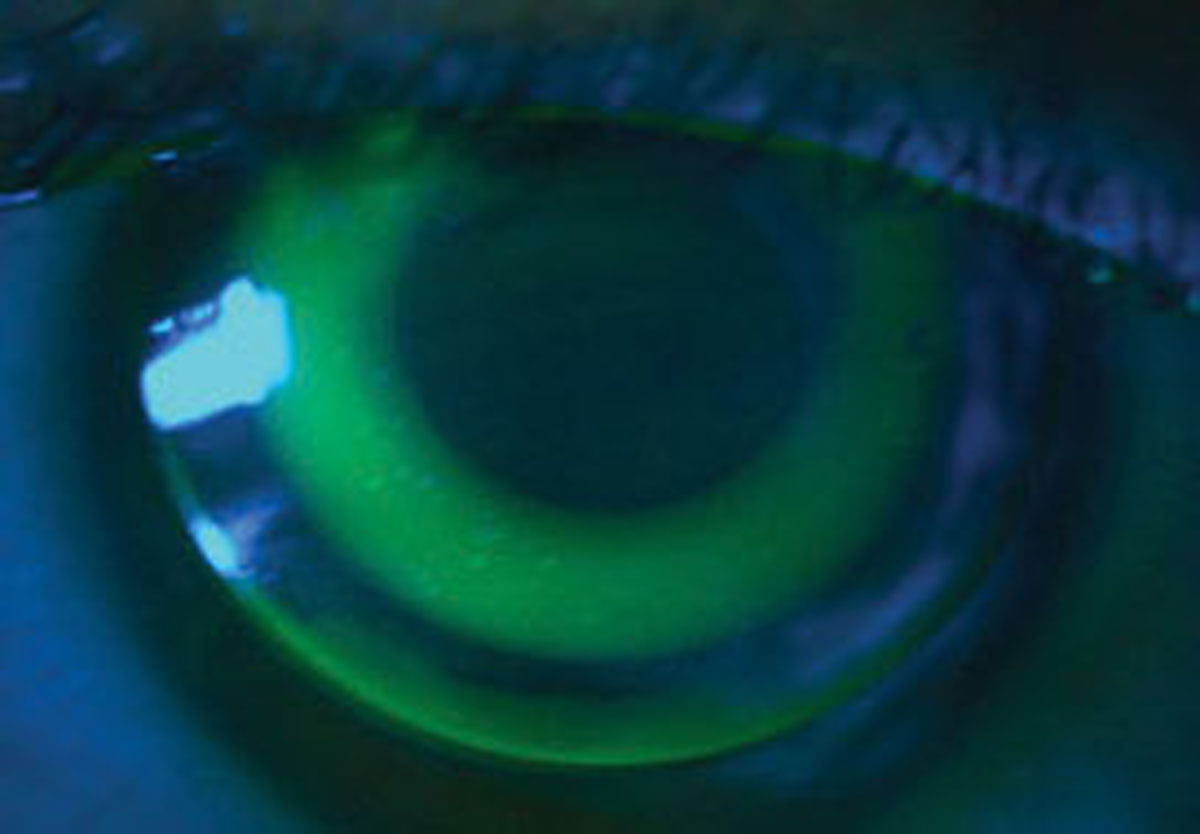 |
Ortho-K lenses and 0.01% atropine may both work to control AL elongation in highly myopic eyes. Photo: Julie Tyler, OD, and Heidi Wagner, OD, MPH. |
Researchers in China wanted to determine whether axial length (AL) increases by the same extent in eyes treated bilaterally with orthokeratology (ortho-K) or administration of 0.01% atropine in order to find a better method to reduce the AL differences between both eyes in children with myopic anisometropia. Their study determined that ortho-K decreases the AL differences between both eyes, whereas administration of 0.01% atropine does not. It did note that ortho-K lenses were more effective than 0.01% atropine in controlling AL elongation in the eyes with high myopia after one-year of follow-up.
The retrospective study analyzed 95 children with myopic anisometropia who used ortho-K lenses (n=49) or 0.01% atropine eye drops (n=46). After the ortho-K lenses were dispensed, subjects were advised to wear them every night for at least eight consecutive hours. In the atropine group, the children were asked to wear single-vision spectacle lenses for full correction with the highest positive/least negative power consistent with the optimum visual acuity and to administer one drop of 0.01% atropine in both eyes once before bedtime every night.
The mean baseline of spherical equivalent refractive error of high myopia and low myopia eyes was 24.01D and 22.18D, respectively. The mean baseline AL of high and low myopia eyes was 24.80mm and 24.08mm, respectively.
After one year of treatment, the mean change in AL of high myopia eyes and low myopia eyes in the ortho-K group was 0.18mm and 0.24mm, respectively, and 0.28mm and 0.25mm, respectively, in the 0.01% atropine group. Multivariate regression analyses showed significant differences in AL change between high and low myopia eyes after treatment with ortho-K, whereas no significant difference was observed in the 0.01% atropine group.
The change in AL in the high myopia group was less with ortho-K lenses than with 0.01% atropine, but there was no significant difference between the change in AL in the low myopia group with either treatment.
“Based on the control of AL elongation in high myopic eyes and the reduction in the AL differences between two eyes in most subjects, ortho-K lenses seem to be an effective method than 0.01% atropine over a treatment period of one year,” the researchers noted.
Because there are individual differences in reducing the AL differences between two eyes by using ortho-K lenses and 0.01% atropine, the study recommends individualized corrective methods be adopted for different children.
Ji N, Niu Y, Qin J, et al. Orthokeratology lenses vs. administration of 0.01% atropine eye drops for axial length elongation in children with myopic anisometropia. Eye Contact Lens. October 18, 2021. [Epub ahead of print]. |

